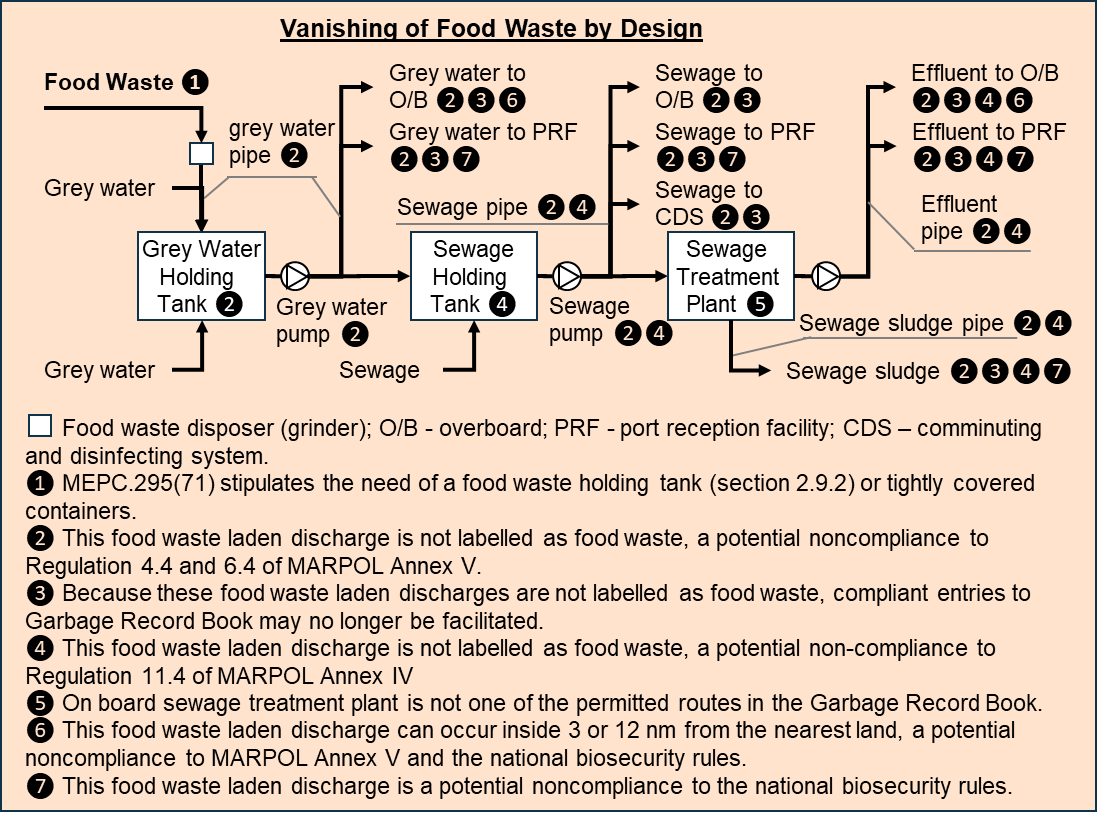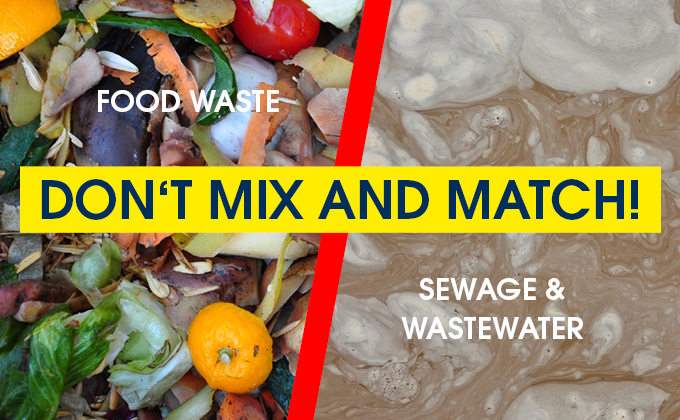Food waste does not belong in the wastewater system of a ship, not only regarding the efficiency of the system but also from a legal point of view. The handling of food waste is strictly regulated for good reasons, and making it disappear with the help of the sewage system is at best non-compliance. Disposing of ship sewage mixed with food waste on land is in breach of national biosafety regulations and poses a potential biohazard to local communities and the environment. Mixing food waste with wastewater on board a ship already violates Annex V of IMO’s MARPOL convention as such.
Food waste can spread plant pests, as well as livestock and poultry diseases such as swine fever, rabies, foot and mouth disease or avian flu. Some countries have strict biosecurity regulations falling under the jurisdiction of the national agricultural authorities, while others have ad-hoc measures.
In short, these rules demand that food waste be either discharged to the sea beyond 3 nm or 12 nm from the nearest land or transferred to the approved facilities for disposal. In the meantime, it must be managed in a way that is leakproof.
Annex V of IMO’s MARPOL Convention permits three routes for a ship’s food waste: to the sea (beyond 3 or 12 nm from the nearest land); to an onboard incinerator; and to port reception facilities. The actual disposal route must be recorded in a Garbage Record Book.
However, on many ships, food waste and its derivatives are sent, in whole or in part, to the grey water system, where it vanishes without a trace. The technical standards of some classification societies permit food waste to be sent to the sewage treatment plant instead of a food waste holding tank as stipulated in section 2.9.2 of IMO MEPC.259(71). Such standards create further non-conformity because sewage treatment plant is not one of the three permitted routes in the Garbage Record Book, which is completed and signed by the ship Master.
The diagram below illustrates the extent of potential non-compliances, looking at a food waste disposer as one of many potential examples.
Food waste entering the system from the top left corner of the diagram never comes out from the system; it simply vanishes. Tracing the lines to the port reception facilities (PRF), it is clear how food waste gets ashore in disguise, escaping the ‘approved facilities’ intended by the local biosecurity rules. From there it can end up on the agricultural land, carrying biosecurity risks with it.
Read the full article by Dr. Wei Chen on The Martime Executive

